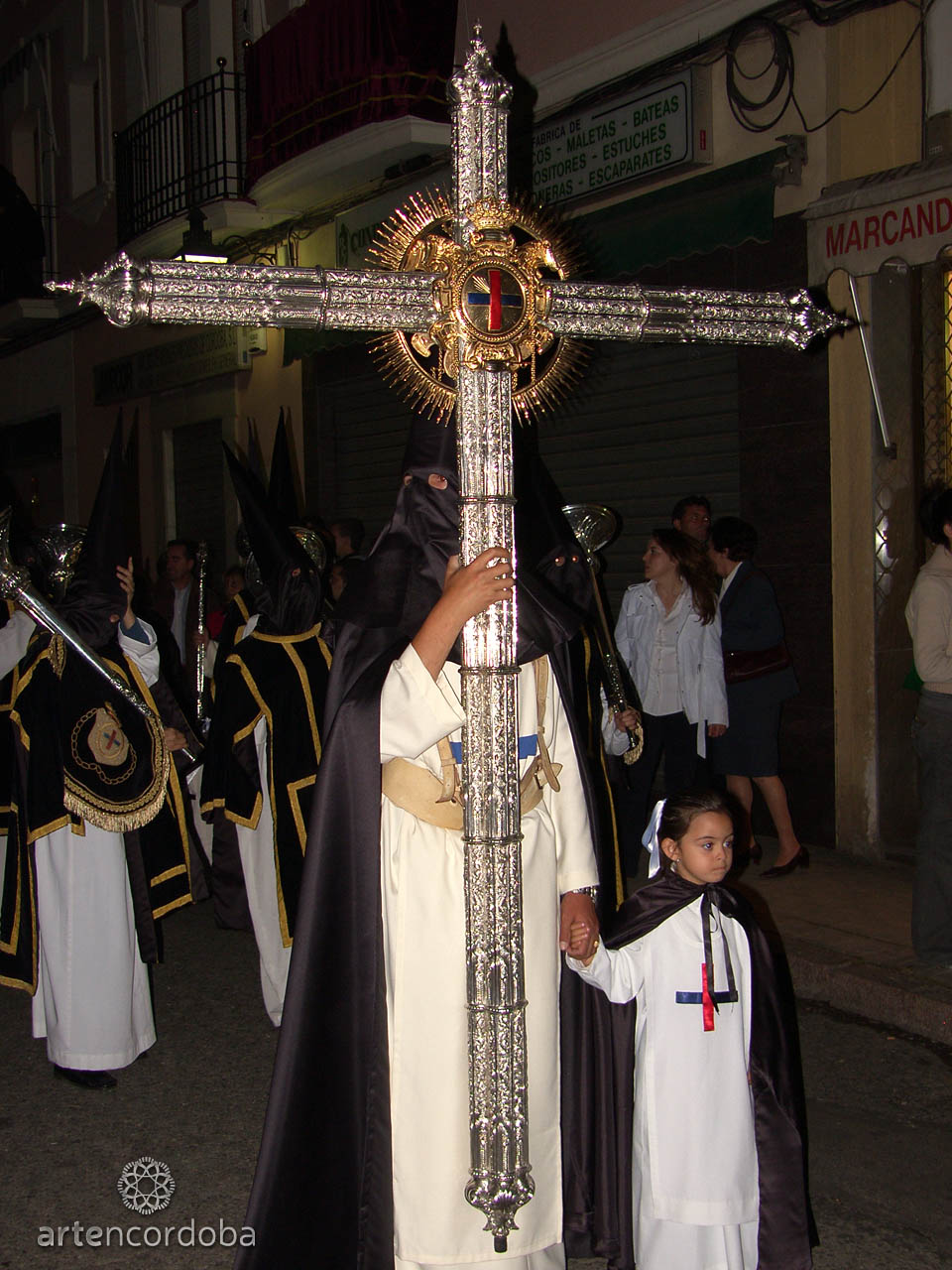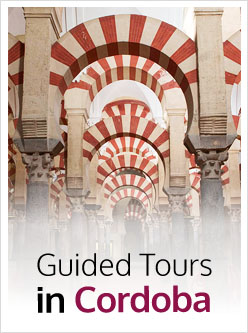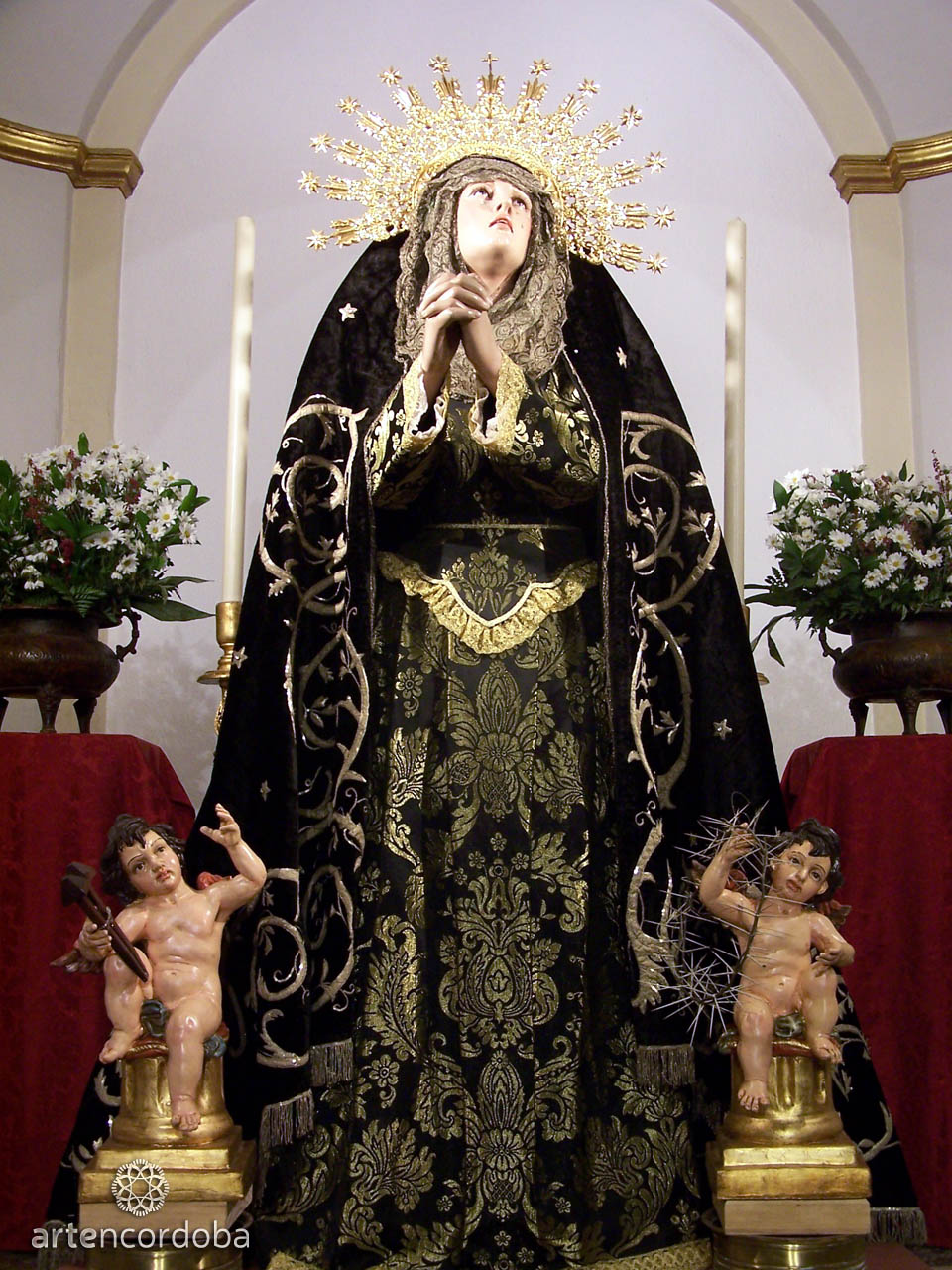 Brotherhood of the Holy Christ of Grace and Holy Mary of Pains and Mercy.
Brotherhood of the Holy Christ of Grace and Holy Mary of Pains and Mercy.
HISTORY.
We only know part of the origin of Hermandad del Cristo de Gracia (Brotherhood of the Christ of Grace) thanks to a 12-page document, found in a file with several ecclesiastical writings. The rest of the documents must have got lost due to the continuous historical changes experienced by the Trinitarian convent along the 19th century, when the monks were expelled by the French troops and the convent was later secularised. From those 12 pages, called Protocol, we can deduce some information, such as the Mexican origin of the main image of the brotherhood, donated by Francisca de la Cruz, as well as the three rogation processions that took place with this image on 1st May 1653, on 19th April 1732 –both begging for rain- and on 22nd December 1809, in this case to beg for the release of Monarch Fernando VII when he was held prisoner in France by Napoleon’s troops.
TEMPLE.
Parish of Santa María de Gracia. The Church of Santa Maria de Gracia was founded in 1608 as a Discalced Trinitarian convent, and it was elevated over the ground, therefore, we need to access it through two ramps. The inside consists of a longitudinal nave richly decorated in Baroque style, as well as the altarpiece carved in the same artistic style.
THE IMAGES.

Santísimo Cristo de Gracia (Holy Christ of Grace)
Around 1607 Francisca de la Cruz donated the image of Santísimo Cristo de Gracia (Holy Christ of Grace) to the Trinitarian convent. Its author is anonymous and it is thought to date back to the end of the 16th century or beginning of the 17th.
It is a hollow piece, made with a mixture of corn cane, several vegetable fibres and glued fabrics. The use of this kind of materials was very frequent in Mexico from Pre-Columbian times. There are numerous examples preserved in Spain; in fact, they were known as Tarascan Christs.
The holy image is a crucified dead on the Cross. We can highlight his long figure, where his long arms stand out. There are numerous swellings along his body, even on his face, which has long features, straight and sharp nose and half-opened eyes. Both his beard, divided in two, and his moustache and hair are carved, but his head is covered by long natural hair which hides the carving.
The Lord used to wear a purity cloth made with glued fabrics, but nowadays this is covered by a white silk shroud with golden embroidery. The tree-like Cross is decorated at the endings and has titulum.
 María Santísima de los Dolores y Misericordia (Holy Mary of Pains and Mercy)
María Santísima de los Dolores y Misericordia (Holy Mary of Pains and Mercy)
It was donated to the convent at the end of the 19th century. Nowadays, it is thought to have been made around that time, but there is no evidence whatsoever about the author.
It is a fully sculpted image, whose hands and face are very well carved. She has a round face, with marked cheeks and chin. She is looking up at the cross, and together with her half-opened mouth, this Virgin shows a very beautiful gesture of contained pain.
San Juan Evangelista (Saint John Evangelist) and Santa María Magdalena (Saint Mary Magdalene).
The calvary is completed with the images of Saint John Evangelist and Saint Mary Magdalene. Together with the image of María Santísima de los Dolores y Misericordia (Holy Mary of Pains and Mercy), they are thought to have been made in the same workshop, more specifically from the area of Valencia.
NAZARENE HABIT.
White tunic and scapular with red and blue cross, black cape and face-coverer with black belt (Trinitarian habit).
IMPORTANT INSIGNIAS.
Set of Gothic insignias with silversmithing.
Guiding Cross and lanterns by Villarreal (1993), banner and flag with embroidery in gold, silver and silks from the beginning of the 20th century, restored in 1986 and 1988, respectively, by Antonio Muñoz and poles by Villarreal (1993), also author of the candlesticks; silver Regulations Book and censers (1987) by Alfonso Luque, among other insignias of great artistic value.


Elige el tour que más se ajuste a tus necesidades y reserva tu plaza en una de nuestras visitas guiadas regulares.
Las Visitas guiadas regulares son aquellas a las que puedes apuntarte de forma individual, se realizan regularmente y en un solo idioma, castellano o inglés
Visita Guiada Mezquita-Catedral de Córdoba
5 / 5
13€
Visita Guiada Mezquita de Córdoba y Judería
5 / 5
Desde
17€
Visita Guiada Córdoba a Fondo
5 / 5
Desde
40€
Visita Guiada Medina Azahara
5 / 5
Desde
18€




 María Santísima de los Dolores y Misericordia (Holy Mary of Pains and Mercy)
María Santísima de los Dolores y Misericordia (Holy Mary of Pains and Mercy)